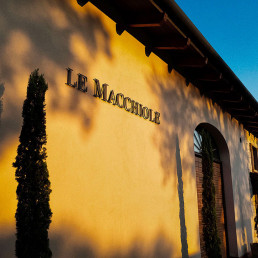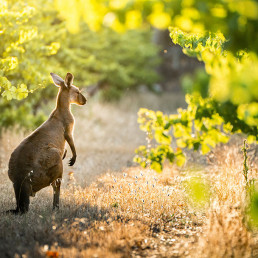Get Your Drink On with Vermouth!
Vermouth has long been lauded as a supporting player, but now it's got its own show.
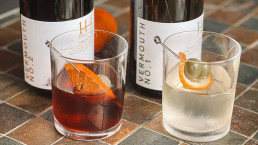
Its 2023 and Vermouth is having a moment, the recent international resurgence in vermouth’s popularity means we are once again in a golden age for this kind of aromatised wine, with some incredibly complex examples available. Every mixologist worth their swizzle stick knows just how much nuance that vermouth brings to a cocktail’s layers and palate ping! From James Bond’s legendary Dry Martini (shaken not stirred!), to the sophisticated Manhattan or Boulevardier and every hip urbanite’s Negroni – these classics are back with a vengeance. And what do they have in common? Vermouth.
“Your Negroni, your martini, your Manhattan and many more would fall perilously short without vermouth. A backbone to heavyweight and newcomer cocktails alike, vermouth doesn’t exist solely to amplify others. Rather, the fortified, aromatized wine is a complex, complete pour all on its own.”
(NY Times)
Here at Dhall & Nash Fine Wines, we are always on the look-out for edgy next-level bevies and the cocktail planets aligned when the talented trio of Jake & Melika Dromgool of 144 Islands alongside crafty distiller Michael Hanna announced this exciting new project: Vermouth No. 1 & Vermouth No. 2 by 144 Islands!
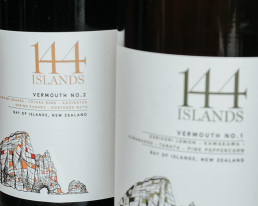
This is an all kiwi endeavour using Northland grapes with native botanicals that sing of the uniqueness and terroir that is New Zealand.
Whether you’re an avid cocktail connoisseur, or your knowledge of vermouth begins and ends with that bottle of Cinzano gathering dust at the back of your spirits cabinet, hopefully our D&N blog will give you some fresh knowledge by diving into the history of vermouth, how it’s made, and why it’s stood the test of time.
Let’s have a bit of geek talk to understand the vibrant world of versatile vermouth:
In the beginning...
A Brief History
Vermouth can be traced back to ancient Chinese, Indian and Greek civilisations, which commonly infused botanicals in their wines or fermented concoctions – most often for medicinal purposes.
The origin of the word “vermouth” is somewhat nebulous. But most concede that it comes from the way French people pronounced the German word for wormwood. You see, fortified wine originally contained wormwood (as did Absinthe). “Wermwut” eventually became vermouth, and the word stuck. So, the story goes…
Wormwood of ancient times was a popular ingredient in many medicinal infusions; an intensely bitter plant that was thought to cure many ailments. Through the years vermouth transformed from a medicinal tonic into an enjoyable beverage. Italy’s Piedmont and France’s Savoie regions became the heart of production, thanks to their Alpine terrain, rich in wormwood and other botanicals.
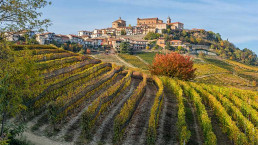
The Modern Vermouth
First stop in ‘modern’ vermouth history has to be Piedmont, Italy in 1786. Derived from ancient Roman recipes, Antonio Benedetto Carpano of Turin, made the first sweet vermouth consisting of Muscat Canelli wine, spices, and aromatic herbs. He used quality ingredients, added a spirit to the herbal wine, and called it ‘Wermut’ and eventually becoming the celebrated Carpano Vermouth.
Then vermouth production crossed the Alps and the French started to produce their style of vermouth, white and dry, thus becoming synonymous with French vermouths. In 1813 Dry vermouth was created by Joseph Noilly of France. Both of these names can still be found on two of the most popular brands of vermouth produced today.
By 1838, this new drink was being exported to the US, Latin America, and across Europe, which then became an exciting new ingredient for bartenders at the end of the 19th century. The drink became so popular that before the second World War, Turin was producing 400 different vermouths.
In the 1950s, Vermouth then saw a new wave in interest thanks to the martini. You can thank Mr. 007, James Bond, for that! Its popularity waned a little in the late 20th century, but since 2013, it has seen a resurgence in the United States thanks to artisan makers doing their quirky spin on craft vermouth. In southern European countries like Spain, France, and Italy, it has always continued to have a following as it was mostly enjoyed in the traditional way as an apéritif/aperitivo.
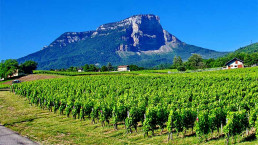
Vermouth, Defined
Technically, vermouth isn’t a spirit but a fortified wine—a flavoured, aromatized wine that’s had its alcohol by volume (ABV) boosted with some kind of neutral alcohol (e.g., clear grape brandy) and been flavoured with a variety of herbs, barks, botanicals, and spices. The base wines are usually aged and comprise at least 75 percent of the mix. Making vermouth is a closely guarded process where many producers each use their own secret recipe of herbs and botanicals.
Back here in Northland New Zealand at 144 Islands, they too have caught the vermouth bug. In collaboration with a craft distiller, Michael Hanna, they have discovered a fascinating machine – a rotary evaporator. It boils the aromatic compounds from the substrate in an extremely low pressure environment, meaning it can boil water at as low a temperature as 18 degrees. This means they were able to extract and preserve the volatile aromatic compounds from a range of materials without damaging or altering them with heat, and so it is a really efficient method of preserving the “essence” of an ingredient. Creating a true reflection of NZ’s unique botanicals and sense of place.
Of course, the defining process of vermouth is in the botanical blend. The plants, herbs and spices that can be used by producers cover an infinite variety. All vermouths contain an artemisia (bitter plant or root) which gives vermouth its fundamental bitter taste. Botanicals are extracted either with maceration (putting them in alcohol and water) or distillation (distilling alcohol through a basket of herbs).
These flavourful ingredients are mostly incorporated into the spirit because the high alcohol content makes it easier to extract the requisite flavours. The herbs can be hung in the neck of the kettle, giving the rising steam an opportunity to carry the desired flavours further up. Sometimes the herbs and plants are added at the end to the fortified wine. Each technique obviously results in a different end product and a well-guarded secret by each producer.
“Like all good wines, Vermouth can really give a sense of where it comes from, and that is also why we have opted for using as many native botanicals as possible”
Jake Dromgool, Proprietor, 144 Islands Winery
The Magic of Botanicals
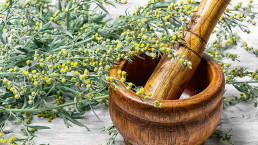
Alongside the explosion of craft gin in the 2000s, the use of botanicals to flavour alcohol became the fixation of many bartenders and spirit drinkers the world over. It was only natural that vermouth would be the next in line for attention, as people began to flock towards this once daggy beverage with newfound enthusiasm.
Here are some of the botanicals often used in vermouth. In the bitter spectrum, there are: cinchona bark (quinquina/quinine), sweet flag, liquorice root, cascarilla, wormwood, angelica root, orris root. In the citrus range: orange peel, lemon peel, lime peel, bitter orange, bergamot orange peel, pomelo peel. Herbs that are often used: juniper, oregano, lavender, roman chamomile, dittany of Crete, gallic rose, angelica, marjoram, hyssop, ginger, coriander, St. john’s wort, honeysuckle flower, kefir lime leaves, sage. Typical spices are clove, star anise, cinnamon bark, cardamom, tonka bean, vanilla, allspice, nutmeg, mace including chamomile, coriander, gentian, juniper, saffron, sage, and wormwood – to name but a few.
The Vermouth Styles
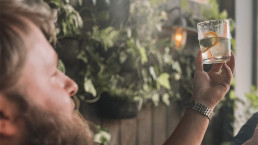
Understanding the different vermouth styles is key to shaking (or mixing) up a delicious cocktail.
Historically, the way vermouth was flavoured categorized it as either red (associated with Italy) or white/dry (associated with France). Carpano Classico is the classic red vermouth with dark, rich flavours like cocoa, wine, spice, toffee, herbs, etc., all intermingling with a slightly bitter edge. Carpano Antica is the classic recipe “alla vaniglia,” or with vanilla added. And then there are vermouths like Carpano’s Punt e Mes, which actually has a bittersweet flavour profile likening it to bitter amaro and enjoyed as a classic aperitivo. Italy’s white vermouths can range from sweet to dry, and overall lack the oxidative quality of France’s dry vermouths.
France has become known for its dry or chambéry vermouths, which are typically light in colour. They can range from sweet and dry (as is the case with chambéry) to nutty and slightly oxidized (in Marseilles). Overall, they’re a bit more herbaceous than they are spicy. Dolin Blanc, for example, is a classic French white vermouth made with herbs and botanicals from the Chambery region of France. And Noilly Prat’s Extra Dry vermouth combines 20 herbs and spices for a complex, floral, fruity (and fully clear) vermouth with a bracingly dry finish.
Dry Vermouth
Dry vermouth goes by a few different names – you may also see it called white or French vermouth, the latter being a hint to its origins. Dry vermouth is made from a white wine base that has been fermented until dry (there is often a small amount of residual sugar, though it’s generally not noticeable). Dry vermouth also contains oxidated flavours, so when it’s mixed with gin, for example, it adds a saline twist which stimulates the tongue and causes it to salivate. Yes please, very moreish!
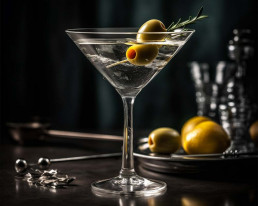
The botanicals used are often different in order to reflect the more delicate and subtle nature of dry vermouth, but still feature the same core ingredients such as wormwood, citrus peel, and whole spices. Its applications are, most famously, for use in a Martini, though it can also be drunk on the rocks with a wedge of lemon or used in a range of other cocktails.
Blanc/Bianco Vermouth
Called “Blanc” vermouths in France and “Bianco” in Italy, these often tend to split the difference between sweet and dry vermouth and can be comparable to an off-dry wine. In cocktails, Blanc/Bianco vermouths are used in drinks where a small amount of sugar may be desired to balance bitter ingredients that could create undesirable astringency, but where sweet vermouth may be too cloying. A great example of this is the White Negroni, where a bianco vermouth makes up for the absence of Campari’s sweetness.
Sweet Vermouth
Also called red/rouge/rosso/tinto vermouth, this is perhaps the most widely available and known style of vermouth. It’s one of the three pillars of the famous Negroni cocktail and is closest in style to one of the original vermouths produced in Italy.
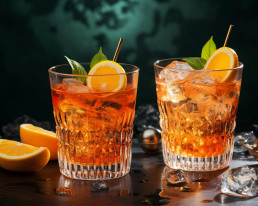
Sweet vermouth historically was made from a red wine base, though these days it’s more common for it to be made from a white wine base. Sweet vermouth is much more popular in Italy, though it is commonly drunk in Spain too. Spanish sweet vermouths are often less sweet than their Italian counterparts.
“[vermouth is] the unsung hero of many classic cocktails”
Decanter Magazine
The sweetness of the vermouth is obtained by adding sugar (for the lower qualities) or alcohol to the fermenting wine. This technique kills the yeast, leaving behind the natural sweetness of the grapes. The alcohol can be made from sugar beet, but the better qualities of vermouth add grape-based alcohol. Well-known Mediterranean grape varieties like Trebbiano and Picpoul are often used, but the lesser known Bianchetta, Catarratto, Clairette blanche and Trevigiana are also popular. The wine from these grapes stays light and low in alcohol. According to European law, after distillation the wine’s ABV will rise to between 15 and 22 %.
Extra-Dry: less than 30 g sugar per litre
Dry: less than 50 g sugar per litre, min 16% alcohol
Semi-Dry: 50 to 90 g sugar per litre
Semi-Sweet: 90 to 130 g sugar per litre
Sweet: 130 g or more sugar per litre
Vermouth in Cocktails
This isn’t even the end of the vermouth story. Craft distilling today means there is a greater variety of new vermouth products on the market –
Boom! Time to celebrate New Zealand’s own 144 Islands’ Vermouths.
This is the highly anticipated and meticulously hand crafted small-batch 144 Islands New Zealand made Vermouth – infused with locally sourced Northland botanicals, made with finesse and passion by locals.
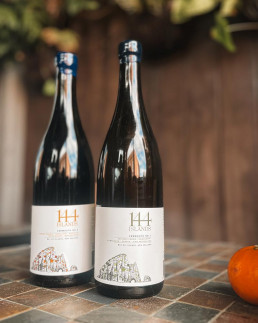
This is the highly anticipated and meticulously hand crafted small-batch 144 Islands New Zealand made Vermouth – infused with locally sourced Northland botanicals, made with finesse and passion by locals.
The role of vermouth in cocktails – As a botanical-flavoured wine, vermouth can bring out the fragrances and aromas of the spirit its mixed with or add another whole dimension. Let’s look at martinis for example. The less vermouth that’s used, the drier the martini is considered to be. A so-called 50/50 martini — or a “halfsies” martini — is made with equal parts vermouth and either gin or vodka and lowers the overall alcohol punch.
Vermouth’s unique, complex, and varied aromatics dilute drinks (in a good way) while creating new flavours, layers and dimensions. Playing with different types of vermouth isn’t unlike experimenting with herb and spice combinations when cooking, to find what brings out desirable flavours in your main ingredients.
Vermouth is also well-utilised spirits-forward drinks to include an element of fruit in a cocktail without fruit juices. Owing to its wine base, vermouth creates the best middle ground between distilled spirits and drinks in the sour family that incorporate higher citric acid and pure fruit juices, like a gimlet (lime) or whiskey sour (lemon). In a nutshell, it’s vermouth’s versatility that keeps it a bartender’s favourite go-to in creating cool cocktails.
Alright, we’ve gone through the basics of vermouth, so now it’s time to explore what to do with it. Incredibly, many of our favourite cocktails quietly showcase the diversity and adaptability of this magnificent beverage – all that’s left is to grab a bottle or two and start experimenting.
144 Islands' Vermouth #1
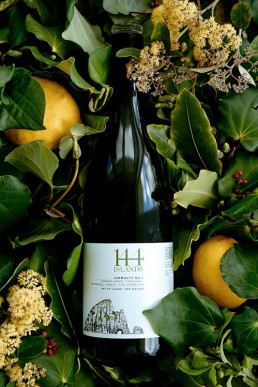
A white base wine of Sauvignon Blanc, Sauvignon Gris, and Chardonnay. Fortified to 22% abv with grain-based spirit, approx. 15-18 g/L residual sugar.
Botanicals: Kerikeri Lemon, Kumarahou, Kawakawa, Tarata, Pink Peppercorn, Manuka and Kanuka Flowers. With the use of Kawakawa and Kumarahou, the Vermouth #1 gives a sense of forest trails and roadside walks through the Far North in the heat of summer.
Enjoy this on its own, with ice, or as a substitute for Gin with Tonic Water, but we recommend serving it in a cocktail with 1/3 Suze and 1/3 Niepoort White Port on Ice.
144 Islands Vermouth #2
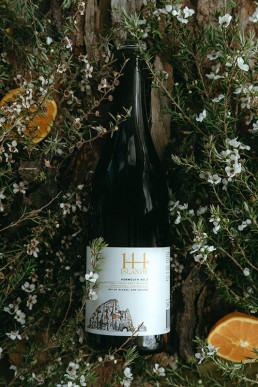
A red base wine of Syrah, fortified to 22% abv with grain based spirit, approx. 190g/L residual sugar.
Botanicals: Kerikeri Orange, Totara, Kahikatea, Matai, Kauri, Northern Rata and Kanuka Flowers. With the use of the barks from all of these native trees, Vermouth #2 undeniably gives a sense of the Puketi forest, just a paper-planes flight from their Home Block.
Owner Jake & his son Remy spent many hours in the past 6 months foraging through the forest, searching for things they could use, and they really feel like this Vermouth truly captures all the beautiful smells of this unique Northland forest.
Delicious on its own or with ice and a slice of orange peel, but we like serving it in a cocktail with 1/3 Campari and 1/3 Stranger & Sons Gin on Ice.
All botanicals macerated in alcohol, then distilled through rotary evaporation and added back to base wine at fortification.
D&N have asked four mixologists from NZ’s coolest locales riff on some ideas for making James Bond-worthy vermouth based cocktails at home using 144 Islands Vermouths – Have fun!
